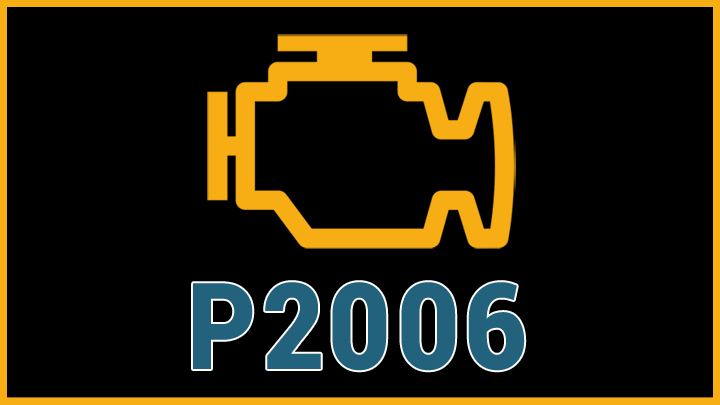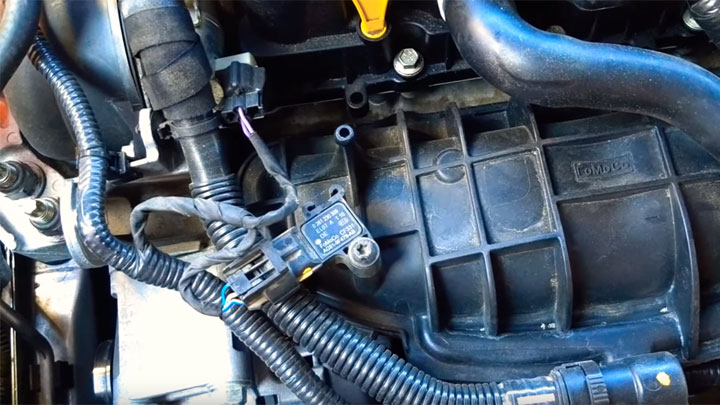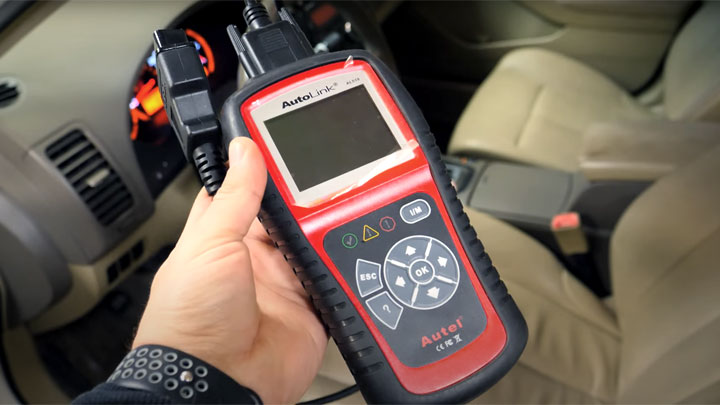P2006 Code (Symptoms, Causes, and How to Fix)
Variable air intakes increase engine efficiency but can trigger fault codes like P2006 for intake manifold issues.
This article explores the most likely causes of a P2006 code, how serious the problem is, and how to properly fix and clear the code.

- DTC P2006: Indicates a problem with the intake manifold runner control system.
- What to do: While not an emergency, it's important to get this code diagnosed and repaired as soon as possible to avoid potential engine damage.
- Possible causes: Faulty intake manifold runner control valve, damaged wiring, or a malfunctioning powertrain control module, among others.
What Does Code P2006 Mean?
Diagnostic fault code P2006 is indicative of a relative failure for an intake manifold’s variable runners to articulate or actuate in the desired manner. This can either relate to an actual runner positioning issue or alternatively, a position sensing failure. In either case, the same P2006 fault is actively logged.
To better understand the condition that is being described, one must first understand how a variable intake operates. An intake manifold of this design features positional runners, which are driven by a corresponding actuator, and controlled by a vehicle’s ECM/PCM.
These runners are adjusted to meet performance demands in real-time, effectively lengthening and shortening the intake tract to better distribute horsepower throughout an engine’s RPM range.
In the event of an active P2006 fault, a vehicle’s ECM/PCM has determined that the engine’s intake runners are positioned in a manner other than that which is desired. This determination has been made by assessing feedback from the engine’s IMRC position sensor and/or MAP sensor.
Related: P2004 Code
Symptoms of Code P2006

Diagnostic fault code P2006 is often accompanied by a host of secondary symptoms, some of which tend to be noticeably more severe in nature than others. Recognizing these symptoms can prove beneficial when attempting to repair the issue at hand in the most expedited fashion possible.
The following are several of the most common symptoms associated with DTC P2006.
- Erratic idle
- Detectable engine surge
- Loss of engine performance
- Reduced fuel economy
- Rich exhaust odor
- Hesitation under load
See Also: Intake Manifold Leak Symptoms
Causes of Code P2006

Diagnostic fault code P2006 can be caused by a host of underlying issues, some of which prove more difficult to pinpoint than others. Understanding these potential causes can often save time and trouble when working through the necessary diagnostic processes.
The following are several of the most prominent causes of DTC P2006.
- Hung or binding manifold runners
- Compromised runner actuator solenoid
- Damaged control circuit wiring
- Excessive manifold carbon build-up
- Faulty runner position sensor
- Inoperable MAP sensor
Is Code P2006 Serious?
A P2006 code often proves to be rather troublesome in nature, due in large part to the symptoms often associated with this condition. In many instances, engine performance is severely limited, with hesitation and stalling resulting in at least a small percentage of cases. Additionally, these symptoms only tend to worsen with time.
Another issue that often arises when DTC fault P2006 is present is a noticeable reduction in fuel economy. Due to the less than efficient manner in which combustion takes place when intake flow is stifled, excess fuel is burnt to achieve desired, or near desired performance. This often leads to otherwise unnecessary pain at the pump.
In any event, the root cause of a vehicle’s P2006 diagnostic fault code should be diagnosed and repaired as soon as possible. Doing so greatly reduces the chance of finding yourself inadvertently stuck on the side of the road.
If you do not feel comfortable tackling such repairs yourself, an appointment should be made with a trusted service center at the first available opportunity.
How to Fix Code P2006

The following steps can be used to guide you through the process of diagnosing and repairing the root cause of your vehicle’s P2006 fault code. As always, before attempting such repairs, one should consult factory-specific service literature for their particular model of vehicle.
#1 – Check For Additional DTCs
Before beginning the diagnostic process, one should check for the presence of any additional DTCs. Any such DTCs that are found should be thoroughly diagnosed before proceeding.
#2 – Inspect IMRC Actuator Electrical Connections
Begin by carefully inspecting the electrical plug connecting your engine’s wiring harness to the IMRC actuator itself, as well as all associated wiring. Correct any deficiencies that are found before proceeding.
#3 – Check Resistance of Actuator & Position Sensor
Next, test the resistance of your vehicle’s IMRC actuator and associated position sensor with a quality multimeter. These readings should be compared to specifications provided by your vehicle’s manufacturer. Out of specification readings would necessitate the replacement of the component in question.
#4 – Check for Frozen Runner
On some vehicles, it is possible to check for excess resistance upon the manifold runner itself by disconnecting the corresponding actuator. The runner can then be manually swept by hand. Excessive resistance would be indicative of intake carbon fouling or runner-related damage.
#5 – Inspect Vacuum Lines
Many intake runner actuators are controlled by the engine vacuum. In such instances where this proves true, the presence of a suitable vacuum should be checked at all applicable connections with the use of a suitable tester.
#6 – Check MAP Sensor
If all other tests have proved inconclusive, it might be necessary to check the input and output voltage to/from your engine’s MAP sensor, as well as all related resistance readings. If improper supply voltage/ground is discovered, further circuit diagnosis will be required.
If sensor output or resistance readings are found to be out of specification, the MAP sensor itself will require replacement. On the other hand, if all the above tests have revealed no issues, the vehicle in question’s PCM/ECM would prove suspect.
- 5 Symptoms of an EVAP Leak (and Repair Cost) - Apr 27, 2024
- P0480 Code (Symptoms, Causes, and How to Fix) - Apr 19, 2024
- Car Temperature Gauge Stopped Working? (Here’s Why) - Apr 15, 2024
